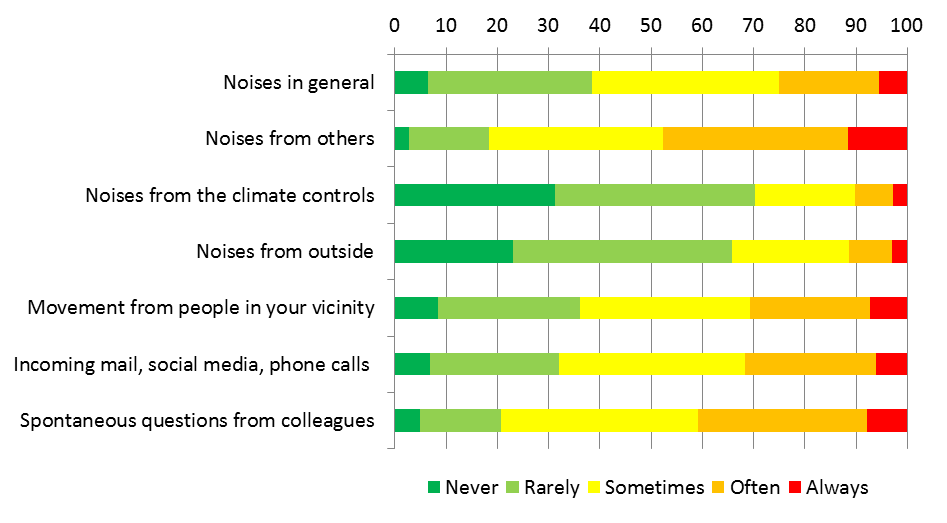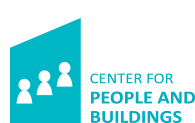What distracts us at the office? And what can you do about it?
4 april 2016
In 2014 and 2015 six questions on ‘distraction at the office’ were added to the WODI questionnaire. The reason being that, whereas the possibility to concentrate is reported in most of our case studies as a major problem, respondents also report it as one of the most important issues. Time to look for answers, explanations and solutions to this problem.
Most distracted by...
WODI database analysis shows that employees are most frequently distracted by noise their co-workers make and by their co-workers spontaneous questions. Noise made by climate installations and noises from outside were less frequently reported as disturbances.

Co-workers are therefore the primary source of distraction. In offices with a flexible use of work-stations (often combined with a large degree of openness in the office layout) there are more distractions and disturbances than in more traditional closed offices.
Relationship between distraction and satisfaction on the possibilities to concentrate ...
For these sources of distraction, we looked at which ones were most related with employee satisfaction (about the possibilities to concentrate). The question being: ‘which sources of distraction determine the appreciation of the possibilities to concentrate most?’ This was the case for noises and movements of co-workers. This implies that the more distraction employees experience from these two sources, the less satisfied they are about the possibilities to concentrate at work.
Addressing the problem
Do you recognize this problem? Or are you expecting these kinds of problems in a new work environment? Then you should take the following critical points into consideration:
- Make clear rules about the use of the work environment. It is not only the office space layout itself, but also the agreed on rules of conduct that determine the functionality of spaces (e.g. quiet zones). It is important to consider others.
- Take good care of acoustic measures in open and closed spaces.
- Do not make large open spaces. Do not place too many workstations together in one open space. Take care that places in open space are alternated with (acoustic and visual) partitions or enclosed rooms (e.g. meeting rooms, cockpits). Make sure there are enough phone boots and cockpits in the vicinity of the open space.
- Add small enclosed meeting rooms (with 2 to 4 seats) for ad-hoc meetings within the open space. This reduces meetings within the open space itself and thus results in less disturbances.
- Make sure to separate the pantry or coffee corner acoustically from the open workstations.
- Situate work lounges and meeting points so that there is at least some kind of visual and acoustic division.
